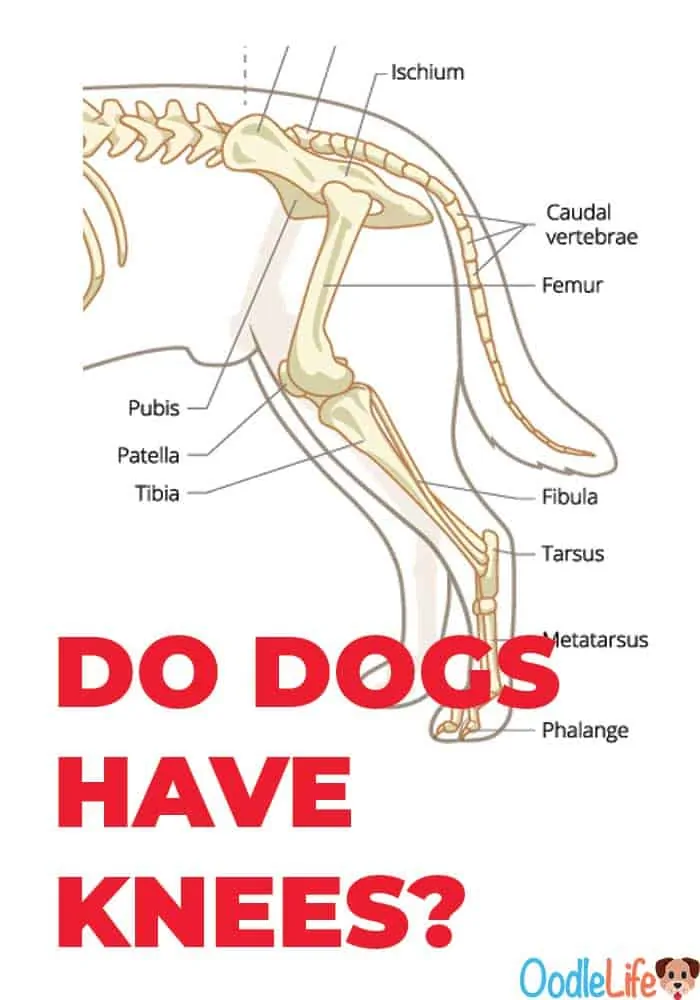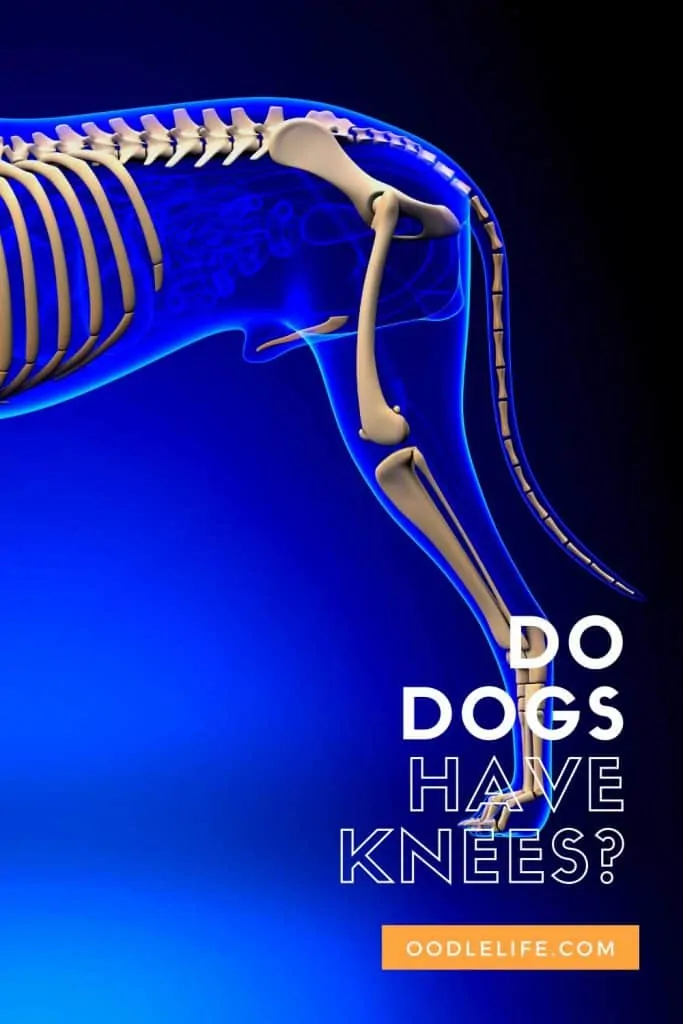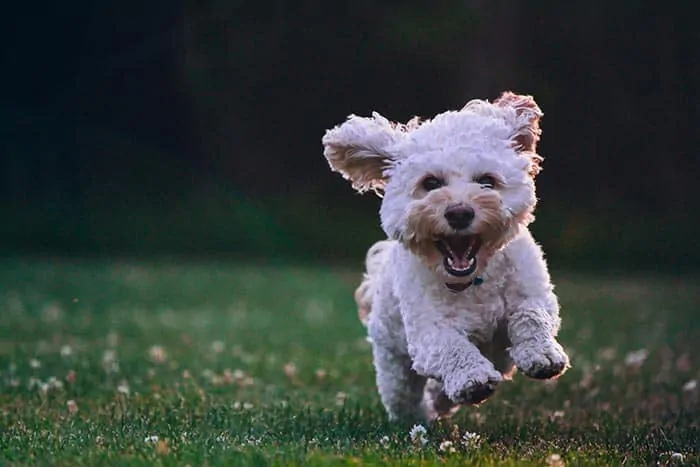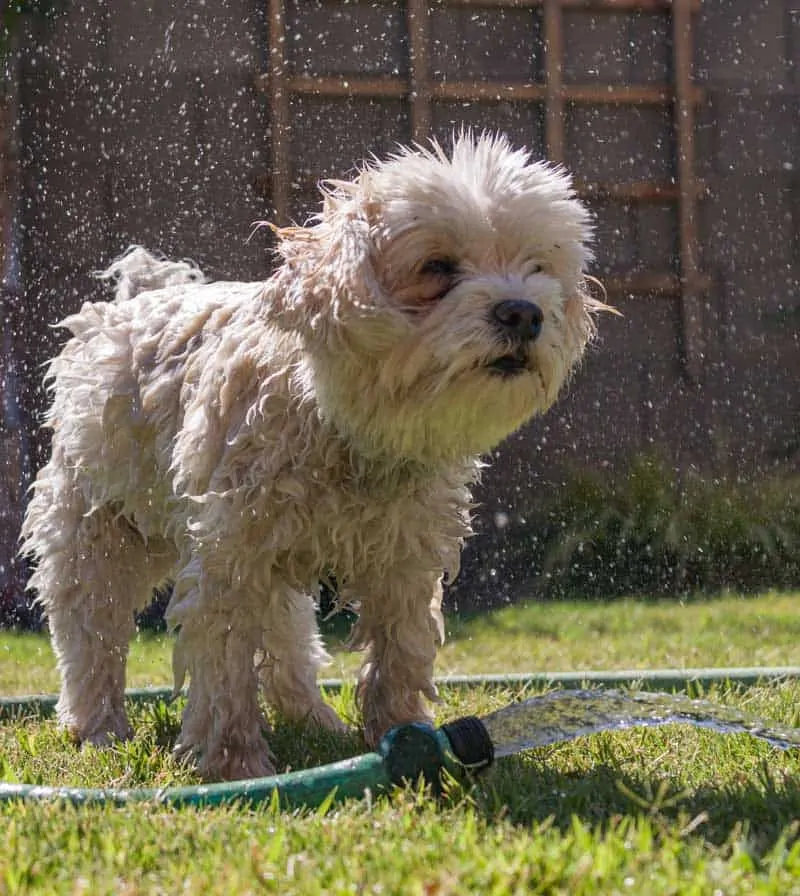Do Dogs Have Knees or Elbows? – Ask The Experts FAQ

Four legs, one tongue, a bunch of teeth, and a wagging tail. A dog! When you think of a dog, you might think of many different shapes and sizes. There are giant breeds (like the Bernedoodle) and miniatures (like the Teacup Goldendoodle) and everything in between!
Despite this vast variation in appearance from a Saint Bernard to a Chihuahua, there are distinct anatomical similarities between all dogs.
One question that tricks (pretty much everyone) is how many knees to dogs have. Do dogs even really have knees? Do dogs have elbows? Is it two, four, or none?
If you need to know if it is “yes knees” or “no” (ha terrible joke) – we have you covered!
Do dogs have knees or elbows?
Like all four-legged mammals, dogs have knees. In fact, they have knees AND elbows. From giraffe through to dogs or cats, all four-legged mammals have two knees and two elbows.
The two front legs have elbows, and the two hind-legs (back legs) have knees.
All dog breeds have knees and elbows, from the largest through to miniature and toy breeds.
Dogs even have kneecaps on each knee, similar to humans! In fact, the knee, in general, is alike in construction and mechanic to a human knee. Knees are only knees if they do have the cap present (the kneecap is known as the patella).

How many knees do dogs have?
Dogs have two knees – both in the back legs. The front legs are considered to have elbows.
An interesting fact is that all four limbs are considered to be legs because they contacted the ground during movement. For humans, our arms don’t generally touch the ground when we walk or run.
If they did, our arms would also be called legs. So a human crawling actually has four legs!
Dogs are lucky that their front limbs are considered legs. Despite having way less muscle than the back legs, the front legs support around 2/3rds of the dog’s body weight. The more muscular jumping back legs get a manageable load of around 1/3rd of the dog’s weight.
The back legs are muscular, though, and have a driving force that can allow jumping and rapid movements.
A Vet Answers: Why Dog Knees Are So Important
I wanted to know more about dog knees, so I reached out to a Veterinarian. Dr. Jordan Turner is a practicing veterinarian working with dogs and cats.
“Dogs do have knees, and they’re very similar to human knees. It can be hard to see where a dog’s knees are because the anatomy of their legs is different from a human’s. The main difference is that dogs stand on their tiptoes, and their heelbones are above the floor.”
“To find a dog’s knee, look at their leg from the bottom up. The first main joint is the ankle, with the heel bone pointing backward and upwards. Keep going, and you’ll find the knee, which just like ours points forwards.”

Photo: Unsplash/Joe Caione
What can go wrong with a dog knee?
“Knees are commonplace to find joint problems. The three most common knee problems dogs get are: dislocating kneecaps, cruciate ligament rupture, and osteoarthritis. It’s sensible to limit how much exercise young puppies do to protect their joints, especially their knees.”
“A good rule of thumb for how long to walk a puppy is to take their age in months and multiply this by 5. This means that a 4-month-old puppy should walk for 20 minutes a day, a 5-month-old dog for 25 minutes per day, etc.”
What Does a Dog Knee Injury Look Like?
Dr. Jordan Turner elaborated on the physical appearance of a dog that has a knee injury.
“Keep an eye out for dogs hopping as they run, or holding one leg up as they run. If they don’t seem sore when they do this, they might have dislocating kneecaps (patellar luxation). This is a condition that is worth getting checked by your veterinarian because some dogs need corrective surgery. Cruciate ligament damage is a common cause of joint pain in dogs.”
Why is ligament damage such a big deal for dogs?
“There are 2 ligaments inside the knee joint that form an X shape. If one of these is damaged or broken, then the knee joint becomes unstable and painful. Cruciate ligaments can break during exercise, but it can also happen due to old age wear-and-tear. Dogs with damaged cruciate ligaments can be in a lot of pain and struggle to use their legs.”
If this happens to your dog, get them checked by a Veterinarian to treat the pain, and help the joint heal. If left untreated, cruciate ligament rupture can cause permanent joint damage and arthritis.”
If you suspect a cruciate ligament tear, the difference of a few days before care can be the difference between a temporary problem and a lifetime of lameness or disability. Take dog knees very seriously.

Vet Answer: What is a Luxating Patella in a Dog and What To Do?
I asked dog expert, Dr. Ivan Luong, about patella dislocations – the most common knee injury for larger dogs.
“Dogs indeed have knees, the anatomy of their knees, or stifle, is actually quite similar to us as humans! Like humans, the joint is made up of three main bones, the femur, the tibia, and the patella (knee cap).”
“The knee is a complex joint that allows many movements of the hindlimbs, including rotation, gliding, and sliding as the joint flexes and extends. The most common problem that owners may encounter with their dog’s knees is a condition known as luxating patella, or dislocating knee cap.”
How severe is a luxating patella in a dog?
“This is a condition that can have a wide-ranging severity. The patella usually slides in a groove on the femur and is held in place by a ligament. Due to the joint complexity, there are many reasons why a dog may have luxating patellas.”
Is a canine luxating patella more common larger or smaller dogs?
“We most commonly see issues related to luxating patellas in smaller dog breeds where they are genetically more disposed to a shallower groove, which can predispose the knee cap to dislocate.”
“What you might expect to see is that your dog is walking and will suddenly pick one of his back legs up and skips, this may be caused by the knee cap being out of place which can be painful, however after a few steps the knee cap may slide back into the right place, and they will continue the use of their back legs again.”
“The severity of the condition can be determined by how often this occurs.”
“While this may also seem to be an innocuous problem that fixes itself, issues can arise in the future where the joint can develop arthritis and become painful. If you notice your puppy having any issues with walking or notice pain with its knees, please visit a veterinarian.”

Photo by Elijah Ehkdal – Unsplash
How old are dogs that have a luxating patella?
Could a puppy have a slipping patella? How is it addressed – medication or surgery?
“Luxating patella is a condition that is usually diagnosed after puppyhood, however, if you have any concerns, please visit your local veterinarian for a check-up.”
“If your dog does indeed have luxating patellas, there are strategies including surgery to address the issue. It is best to have your dog examined by a veterinarian to fully appreciate the extent of the problem and develop a plan.”
Thanks to veterinarian Dr. Ivan Luong of Purr Foods
Do Dogs Have Knees Conclusion
When I set out to research dog knees, it was mostly for a fun lark. I wanted to know the answer in case it came up in any trivia nights!
What I discovered was just how essential knees are to dogs – and I have a newfound appreciation fo rate complex anatomy of this joint.
In summary
- Dogs do have knees
- Dogs have two knees and two elbows
- Dogs DO have kneecaps
- Kneecaps (patella) can slip and cause pain even in puppies
- Cruciate ligament damage is super severe, and something Vets really want more people to be cautious about
A special thanks to the two dedicated expert Veterinarians who took the time to answer my questions about dog knees.